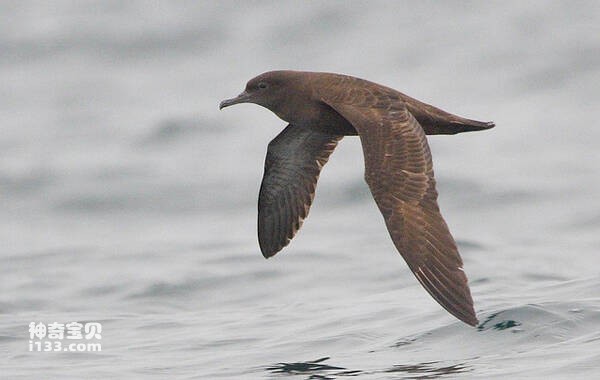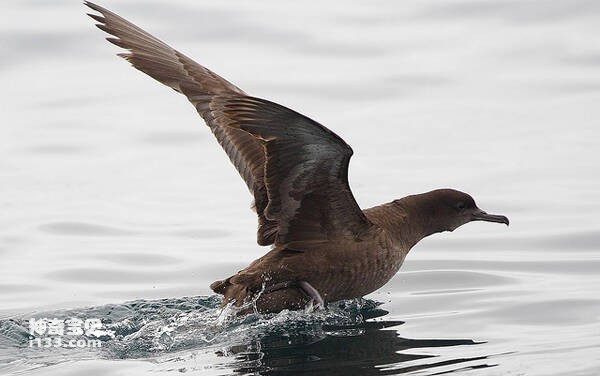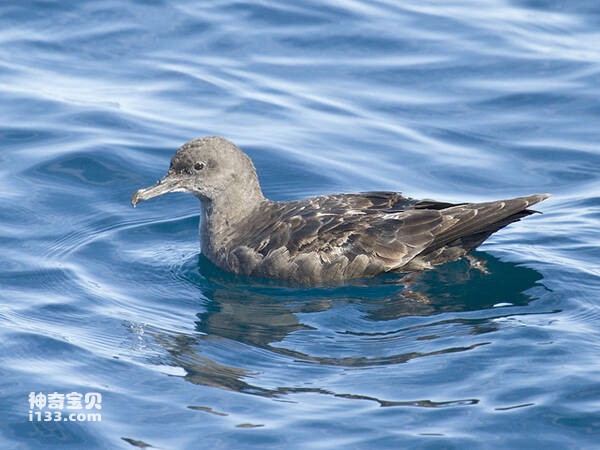Puffinus griseus
IUCN
LCBasic Information
Scientific classification
- name:Puffinus griseus
- Scientific Name:Puffinus griseus,Sooty Shearwater
- Outline:Waterfowl
- Family:
Vital signs
- length:41-51CM
- Weight:No textual research information is available
- lifetime:No textual research information is available
Feature
It is easily recognized in the wild by its narrow, long wings, spindle-shaped body and black feathers
Distribution and Habitat
It breeds in the southern hemisphere of the South Pacific and the South Atlantic, including the coasts of New Zealand and adjacent islands, Chatham, Auckland, Campbell, Magori Island, Norfolk Island, Kapiti Island, and the Bounty Islands, as well as the Strait of Magellan in South American waters, the Falkland Islands and the East coast of South America and its adjacent islands, as far north as Chile.
During the non-breeding period, it can reach as far south as 60 degrees south along the Pacific and Atlantic coasts, and as far north as the Far East, the Kuril Islands, the Sea of Okhotsk, Kamchatka, Sakhalin, the east and west coasts of North America, the Aleutian Islands, the west coast of Labrador, the southern tip of Greenland, and Western Europe, Northern Europe, Scandinavia, southeastern Iceland, and the Atlantic coast of Africa. China is found only off the coast of Fujian, Taiwan and the Pescadores Islands.
The breeding season of the sooty shearwater is mainly living in the
Appearance
The sooty shearwater is a medium-sized seabird. The mouth is thin and laterally flat, the tip of the upper mouth is hooked, and the nasal tube is short, located at the mouth base of the middle line of the rostral peak. The left and right nasal tubes are merged into one, but the middle of the inner surface is separated by a thick partition. The wings are narrow and the tips are long, and the primary feathers are 11. The tail is rounded and medium in length, with 12 tail feathers. The upper body is dark brown, the lower body is grayish brown, the underwing coverts and the base of the flight feathers are silvery gray and glossy, and the edges are dark brown. Chin and throat are grayish white.
Iris dark brown, mouth black, medial tarsus, middle toe and inner toe light blue, lateral and outer toe dark brown or black.
Size measurement: Body length 410-510 mm; Rostral peak 38-42 mm; The wing is 286-320 mm, with a wingspan of about 100 cm; Tail 86-97 mm; Tarsus 45-56 mm.
Details
The Sooty Shearwater (Puffinus griseus) is a medium-sized seabird with no subspecies. It has been suggested that the South American coastal populations belong to different subspecies, thus divided into two subspecies, the named subspecies P.g.griseus and the South American subspecies P.G.hilensis. However, due to insufficient evidence, it was not supported.

The sooty shearwater is a congregant, active both during the day and at night, both during the breeding season and during the non-breeding season. Good at flying, often flying in groups for a long time on the sea, sometimes rapidly flapping two wings, and sometimes gliding over the waves close to the sea. Good at swimming, can also dive, but not deep, not long. Taking off on water is easy and dexterous, but walking on land is difficult and clumsy, taking off also needs to climb high, and can not take off on flat ground.
The sooty shearwater feeds mainly on a variety of small fish, shrimp, crustaceans, mollusks, and other zooplankton. Foraging is mainly carried out on the open water surface, and often accompanied by whales, especially gray whales, activities and foraging, pecking at some of the insects and squid they spit out, while when the whales surface due to interference with the surrounding water surface, often some small fish and crustaceans brought to the surface, thus providing them with opportunities for foraging, in addition to pecking at some small insects and fish and shrimp from the feces of the whales.

The shearwater's most unique characteristic is its long distance migration, flying all the way around the earth for a good meal, first north to the Bering Sea, then south to Antarctica, east to Chile, and finally west to Japan and New Zealand. According to an electronic tag placed on the sooty shearwater to track its activities, it can fly more than 997.8 kilometers in a day, or about 64,000 kilometers a year. Taking advantage of the wind direction, the sooty shearwater flies in a figure-eight pattern over the Pacific Ocean, catching squid, krill and other food along the way. Usually quiet, but in the nest and at night during the feeding of young birds, it makes a high noise. An occasional muffled squawk.
Breeds in temperate southern hemisphere coasts and on islands in the middle of the ocean, often breeding in groups. The breeding season varies from place to place, usually between September and April. To nest on a shore or shore in a low thicket of plants or in a forest. A nest is a pit, usually dug by a parent bird in soft ground, filled with a few dead leaves and grass.

After the nest is built, both male and female birds fly to the nearby sea, only to return a few days later and immediately lay eggs. The eggs are oval or apical oval, white, the size is 58.5-81.7 mm ×42-53.4 mm, the average is 74 mm ×48 mm, and the weight is 69.1-77.75 grams. The male and female birds incubate the eggs in turn, and the incubation period is 30-35 days.
After hatching, the chicks are covered with long and dense downy feathers, and it takes about 5 months of hard feeding for the male and female birds to grow full feathers and change the downy feathers, which is about the end of April. At this point, the parent birds stop feeding and are encouraged by starvation to come out of the nest hole to sea. Around May almost all leave their breeding grounds to live a nomadic life at sea.
Although the sooty shearwater is an extremely abundant species, its population continues to decline due to the impact of fishing, the killing of young birds, and climate change, and it is listed as near threatened by the IUCN. On New Zealand's Snells Islands, where the largest population is located, the sooty Shearwater population declined by 37% between 1969-1971 and 1996-2000, and the burrowing sooty Shearwater population may also have declined.
Has been included in the "China Red List of Species" (2004), evaluation grade - non-threatened species (LC);
It has been included in the List of Land Wildlife that are beneficial or of Important economic and scientific research Value under State Protection issued by the State Forestry Administration of China on August 1, 2000 (Item 8);
It is listed on the IUCN Red List of Threatened Species (IUCN) for 2019 ver 3.1 - Near Threatened Species (NT).
Protect wild animals and eliminate wild meat.
Maintaining ecological balance is everyone's responsibility!








